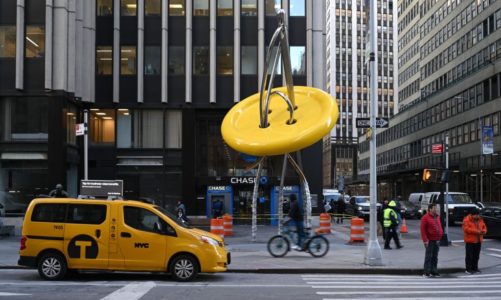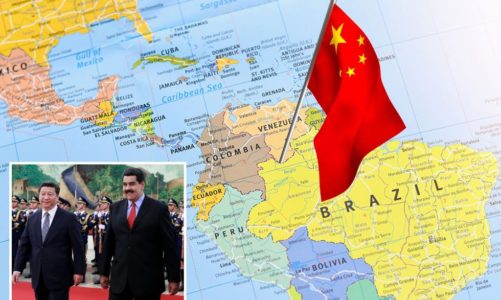MATAMOROS, Mexico — For two red-hot weeks, this Mexican city across from Brownsville, Texas was the hottest spot for illegal immigration on the southern border.
But no more, thanks to a very unique, forceful and controversial Texas intervention that looks to become a long-term influence on national immigration policy.
Non-plussed by the empty threat of Title 42 expulsions in the final days of that hollowed-out policy tool, mostly Venezuelans in huge crowds in late April started surging into the Rio Grande water in numbers that have quickly reached some 10,000, pushing Brownsville into declaring a state of emergency.
By the time I got to town on Monday to cover Title 42’s end of days, immigrants coming off buses at the Matamoros station were still storming over the river, straight into the warm embrace of President Biden’s distant Border Patrol agents to receive the mythical reward of which they had all heard: the Biden government was processing most from riverbank to American heartland within 48 hours.
My narrated video of these mad charges noted the absence of any badged or uniformed opposition on the Texas side.
That video of pell-mell unopposed immigrant entrances onto Texas soil evidently so rankled Republican Texas Gov. Greg Abbott, I have been reliably told, that he finally ordered something many constituents had been pressing for since the border crisis began on Biden’s Inauguration Day.
He put state troopers and a tactical National Guard Unit on a kind of Maginot Line of concertina wire hundreds of yards long with orders to let not even one pass.

Early the next morning, the whole ecosystem of what was going on had changed, and with it, possibly how the post-Title 42 face of border security will look like going forward, at least in its primary epicenter of Texas.
There on the 45-degree Texas riverbank, a line of some 50 immigrants, many with babies and small children, stood immobilized in their tracks, from the razor wire at the top of the steep bank all the way down into the water.
At the top, a coterie of Texas state troopers and National Guardsmen, all slung with weaponry, blocked their forward progress.
Some of the uniformed men were arguing with the immigrants at the highest point, while others shouting down to the rest while pointing back at the Matamoros bank, “Go back! Go Back! This is not a port of entry.”
And reinforcing a message that carrying children in this river was “peligroso,” dangerous.
Some who’d made it to the mid- and upper bank began tacking right along the silver coils of razor wire, looking for an alternative opening.
But the soldiers and state cops proved relentless in mirroring their lateral movement.
It didn’t matter how far the immigrants went, the soldiers synced along their side of the wire.
Down in the river, men and women carrying children and personal belongings in plastic bags also began walking waist-deep downstream also looking for an unopposed gap and didn’t find one.
Eventually, the entire group had no choice but to either sleep on the 45-degree steep, weed infested embankment with little food or water and no shelter, or return to Mexico, which is what they all did.

I Tweeted this remarkable footage, and it went viral almost immediately. With this move, a new Texas policy was born.
During a press conference Wednesday, Department of Homeland Security Secretary Alejandro Mayorkas suggested the Texas operation was illegal and under review by the Department of Justice.
To no avail. Abbott doubled down, retweeting my video and having public affairs specialists push it on social media as a coup.
What followed was a long series of confrontations that I called, collectively in my Tweets of videos, “the Texican Standoff.”
Large groups of migrants continually threw themselves at the soldiers and officers all the rest of that day and then on into the night.
All night long, the cordon on the Texas side would come alive with flashlights the moment any individual or group of immigrants would form up on the Matamoros side.
Overhead in the blackness, state-owned drones buzzed and whirred, their way of keeping watch.
Once any of them touched the waist-deep water and began walking across, the Texans would began shouting scripted warnings in Spanish.
“Stop! Stop right now!” “This is dangerous.” “You are putting your boys and girls at risk.” “Turn around now.”
None were ever let in.
Why the immigrants kept throwing themselves at this new Texas wall struck me as baffling. Some said they expected divine intervention, that somehow the Texans would yield.
But they never would.
Instead, more men in uniform joined them a day later, lengthening and reinforcing the line and putting up more layers of razor wire.

But the immigrants kept coming and coming, all day and all night.
One large group of dripping wet returnees angrily stalked 300 yards down river and found a river weed-choked spot to cross with their babies and young children.
A Mexican emergency medical service officer begged and pleaded repeatedly that they not try to cross it.
But they all went anyway. The strong ones made it to the other side and found themselves blocked just like upriver. The weaker ones quickly became exhausted in the weeds and gave up.
By Thursday night, the buses into Matamoros had all but stopped. Those living in the massive camp told me they would not engage in any standoff with the Texans.
I asked a group of six Venezuelans if they planned to continue with the standoffs.
One acknowledged, grudgingly with a little hint of respect, that “they’re just doing their jobs.
“They’re helping people.”
Yeah, I said, but are you going to swim the river against them?
All six instantly responded, with smiles: “nahhh. Nooo. Nooo.”
By Friday morning, at the most trammeled crossing spot, I asked a Mexican immigration officer alone for once with no one to guard.
“So tell me, what is happening here this morning?” I asked. Smiling, she replied pointing at the implacable soldiers over there: “they say no.”

And so, no migrants?
“No, no migrants. No more,” she said. Why not, I asked. “It’s illegal,” she said.
At least here, in quick fashion, the mass migration of the past weeks had been ended with finality.
With this apparent success, Gov. Abbott plans to expand the tactic all along the border, wherever the migration action gets hot, said Lt. Christopher Olivares, a spokesman for the Texas Department of Public Safety.
“Moving forward, this laid the foundation for how we can use these tools effectively along the border in areas where the Biden administration has not put anything in place like walls and barriers,” he said. “We’ll have to continue moving to plug every single gap along that border. Next, we’ll have to see where these migrants are going to go.”
Texas will have no help from the Biden administration in any of these efforts.
One reason is because the Biden administration has never stopped, blocked, detained or deterred illegal immigration so much as facilitated and accommodated it.
In fact, the Texas operation in Brownsville threw a major monkey wrench into a stunning level of collaboration Biden’s DHS had worked out with its Mexican counterpart, as I detailed in exclusive reporting.
The Border Patrol would tell the Mexican immigration officers when to release the swimmers in a kind of “controlled flow” operation that was never made public.
Texas wrecked all of that by intervening.
“Obviously they don’t like what we’re doing,” Olivares said. “We’re actually taking action and stepping in taking over their responsibility.
We’ve had this moral obligation to protect our state and protect our country. We continue to face criticism even today because the administration wants to welcome these migrants.”
Todd Bensman is the author of “Overrun: How Joe Biden Unleashed the Greatest Border Crisis in U.S. History.”
𝗖𝗿𝗲𝗱𝗶𝘁𝘀, 𝗖𝗼𝗽𝘆𝗿𝗶𝗴𝗵𝘁 & 𝗖𝗼𝘂𝗿𝘁𝗲𝘀𝘆: nypost.com
𝗙𝗼𝗿 𝗮𝗻𝘆 𝗰𝗼𝗺𝗽𝗹𝗮𝗶𝗻𝘁𝘀 𝗿𝗲𝗴𝗮𝗿𝗱𝗶𝗻𝗴 𝗗𝗠𝗖𝗔,
𝗣𝗹𝗲𝗮𝘀𝗲 𝘀𝗲𝗻𝗱 𝘂𝘀 𝗮𝗻 𝗲𝗺𝗮𝗶𝗹 𝗮𝘁 dmca@enspirers.com




